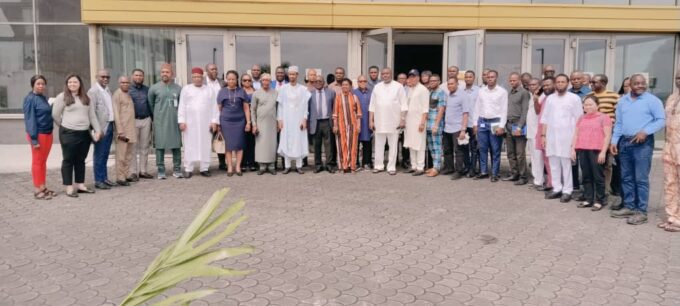By Chioma Obinagwam
Overview of 2023
The performance of the domestic economy appears to have deteriorated compared to 2022 full year (FY) levels, due to factors such as (1) the CBN’s naira redesign drive of Q1-23, (2) election uncertainties, and (3) unavoidable short-term impacts of the Federal government’s reforms – the most of which were the removal of the subsidy of PMS and FX market reforms. Moreover, the high inflationary environment has also not helped matters, given how consumers wallet are pressured, limiting the growth in aggregate demand. As consumers are feeling the impact of rapid price pressures, business investments have also remained underwhelming amid significant FX pressures as FX inflows remain limited. Amid these, available evidence suggests that the government is the only economic agent that appears to be unfazed by the weak macroeconomic narrative as its spending pattern has not changed much relative to the prior years.
When the government embarked on its fast-paced reforms (which have since slowed) upon assuming office on 29th May, we expected it to institute cost-cutting measures as a sign of faith with the Nigerian citizens who are bearing increased cost pressures amid stagnant income. However, it appears the citizens are indirectly funding the government’s expensive lifestyle given that the fiscal authorities have (intend to) maintained their expansionary fiscal policy (at a time fiscal consolidation should be the order of the day) while the citizens are left to bear the significant brunt of reforms. Nonetheless, we acknowledge some of the government’s measures at alleviating the price pressures stemming from its reforms, including (1) NGN35,000 provisional wage increment for all federal government workers for six months and (2) NGN25,000 cash transfer to 15 million households for three months, starting in October.
Year 2024: Crisis or Confidence
Reacting to 2024 outlook, analysts at Cordros Research, “Going into next year, we believe the local macroeconomic environment will improve relative to 2023FY.
“Our expectation is hinged on (1) gradual phasing out of the current impact of PMS subsidy and FX reforms on the non-oil sector, (2) higher crude oil production relative to 2023 levels amid supportive oil prices, (3) FX supply improvement in line with the authorities’ expectations of FX inflows from arrangement with international banks, and (4) anticipated disinflationary trend in H2-24. ”
Also, we expect foreign investors’ sentiments to improve next year, given the recent monetary authorities’ actions in sucking financial system liquidity and ensuring naira assets are attractive, even as the government is expecting FX inflows up to USD10.00 billion from different sources.”
On fiscal policy, we anticipate that the actual fiscal performance for 2024FY will mirror what we witnessed over the past three years, more so that debt servicing (38.0% of total expenditure) and personnel costs & overheads (36.5% of total spending) constitute the bulk of the proposed government spending (excluding GOEs & project-tied loans). While we admit that these items contributing the bulk of government spending in 2024FY are unavoidable, we believe that removing duplicated projects and cutting wasteful spending would go a long way in reducing the cost of governance and narrowing the fiscal deficit in the medium to long term. Besides, our long-held view is that freezing new employment in the public sector and creating an enabling business environment could help improve the country’s employment situation while relieving the government of pressures to absorb unneeded labour into different parastatals.
Crucially, we believe interest rates are bound to rise further into the coming year, as the CBN looks to (1) maintain its price stability mandate, (2) anchor inflation expectations, (3) increase incentives for holding the naira, and (4) boost FX inflows from foreign investors. On the Monetary Policy Rate (MPR), we think the Monetary Policy Committee (MPC) may opt for up to a 300bps increase in the MPR over H1-24 before keeping the rates steady by H2-24. Barring any significant deviation from our current expectations, particularly around (1) inflation and (2) fiscal policy, reducing the interest rate is not under our baseline scenario. On (1), our inflation expectations suggest that the headline inflation will range between 26.01% y/y and 27.72% y/y over H1-24 before the disinflationary process begins in H2-24 and becomes firm by late 2024FY.
Finally, since October, 2023, the CBN has renewed its efforts at solving the challenges stoking the existing FX liquidity constraints. Notable measures include (1) clearing parts of its outstanding FX backlogs, (2) tightening financial system liquidity with CRR debits and OMO actions, (3) indirectly increasing domestic interest rates, and (4) tolerating more flexibility at the NAFEM. As a result, we expect FX liquidity conditions to improve in 2024FY, albeit still frail relative to historical levels, as it appears the CBN has regained its momentum regarding FX reforms. Consequently, if the recent convincing actions by the policymakers to turn the tide are sustained, we expect the local currency pressures to ease in 2024FY. Nonetheless, we expect foreign investors to be keenly watching the development in the FX space with regard to the (1) expected FX inflows as guided by the authorities, (2) CBN’s recent actions in clearing its FX backlogs, and (3) firm direction of short-term interest rates.









Leave a comment